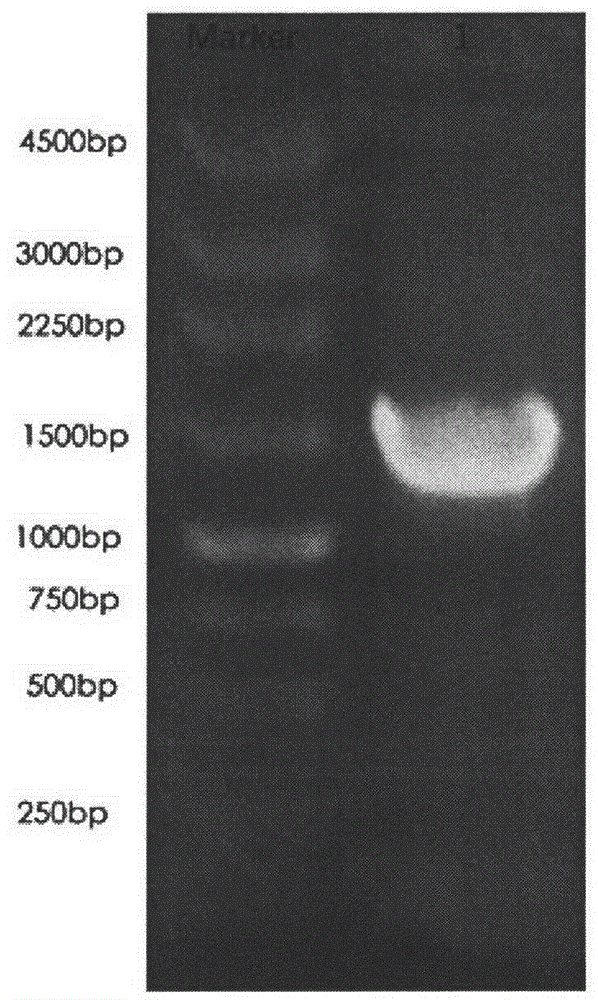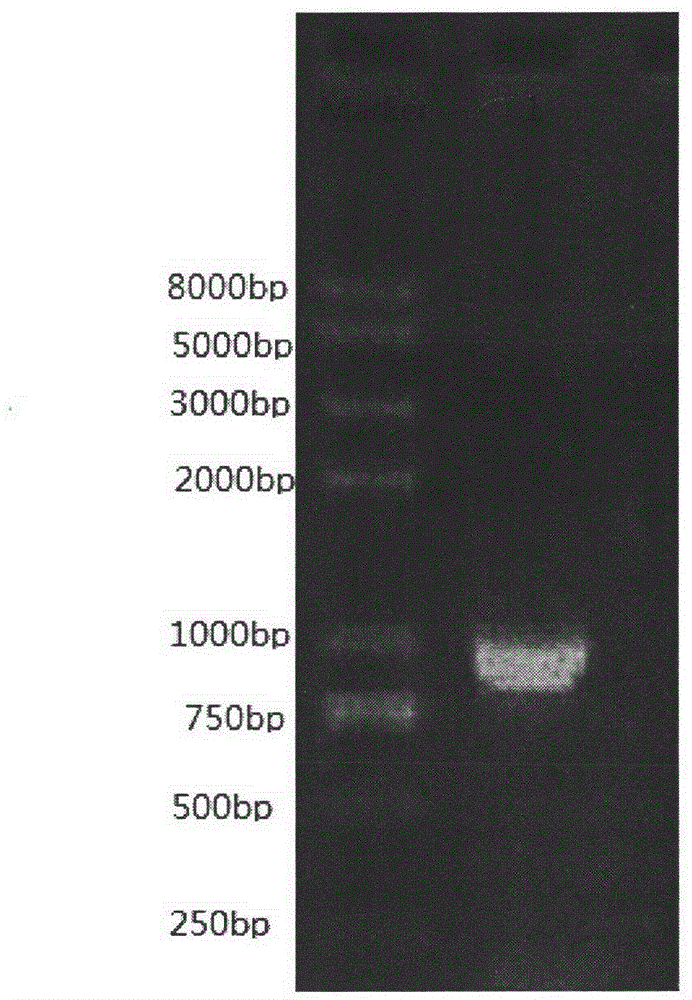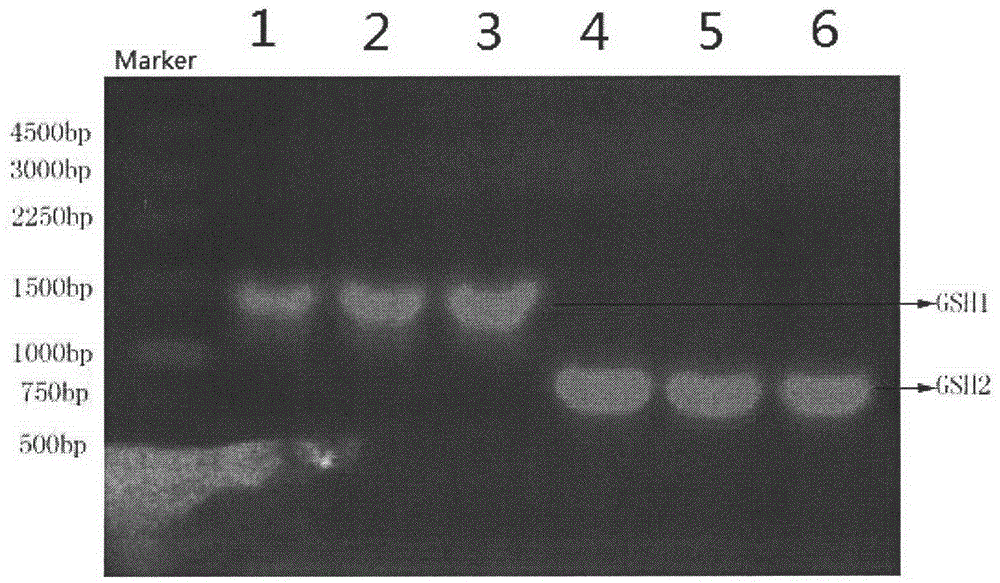Feedback inhibition weakening method for producing glutathione by bacterial strains
A technology of glutathione and bacterial strains, applied in the field of bioengineering, can solve problems such as cytotoxicity, achieve the effects of increasing production, weakening feedback inhibition, and reducing costs and energy consumption
- Summary
- Abstract
- Description
- Claims
- Application Information
AI Technical Summary
Problems solved by technology
Method used
Image
Examples
Embodiment 1
[0030] Example 1 Construction of two expression plasmids
[0031] 1.1 Primer design
[0032] According to the GSH1 and GSH2 sequences reported by NCBI, the following 4 primers were designed:
[0033] GSH1UP: CGC GGATCC ATGATCCCGGACGTATCACAGGC;
[0034] GSH1DOWN: CCC AAGCTTT CAGGCGTGTTTTTCCAGCCACACC;
[0035] GSH2UP:GC TCTAGA GATGATCAAGCTCGGCATCGT;
[0036] GSH2DOWN: ATGAAGCTTTTACTGCTGCTGTAAACGTGC.
[0037] Among them, GSH1UP and GSH1DOWN are used to amplify the GSH1 coding region; GSH2UP and GSH2DOWN are used to amplify the GSH coding region; the underlines on GSH1UP, GSH1DOWN, GSH2UP, and GSH2DOWN represent the BamH I and Hind introduced on GSH1UP, GSH1DOWN, GSH2UP, and GSH2DOWN respectively. III, XbaI and Hind III restriction sites.
[0038] 1.2 PCR amplification of GSH1 and GSH2 sequences
[0039] The genome of Escherichia coli E.coli BL21(DE3) was extracted.
[0040] Using the Escherichia coli E.coli BL21 (DE3) genome as a template, and using GSH1UP and GSH1...
Embodiment 2
[0054] Example 2 Two-plasmid construction
[0055] Extract the two plasmids from the Escherichia coli carrying the plasmids pET28a-GSH1 and pBAD24-GSH2 obtained in 1.3.1 and transform them together into the host strain E.coli BL21(DE3), and smear and contain 60μg / mL card The solid LB plates of Namycin and Ampicillin were cultured at 37°C until the transformants grew out. Among them, E.coli BL21 (DE3) is a strain without kanamycin and ampicillin resistance, and cannot grow on a solid LB plate containing kanamycin and ampicillin. Therefore, the transformants grown on the plate are transformed coli with pET28a-GSH1 and pBAD24-GSH2 plasmids.
[0056] A number of transformants containing pET28a-GSH1 and pBAD24-GSH2 plasmids were randomly selected, shake flask fermentation culture, and two Escherichia coli strains with higher glutathione accumulation were selected respectively, and one strain was named BL21-GSH12.
[0057] At the same time, the extracted pET28a-GSH1 and pBAD24-G...
Embodiment 3
[0061] Example 3 BL21-GSH1, BL21-GSH2, BL21-GSH12 and E.coli BL21(DE3) Shake Flask Fermented Glutathione
[0062] A single colony of BL21-GSH1, BL21-GSH2, BL21-GSH12 and E.coliBL21(DE3) (original bacteria, named BL21) grown overnight on a solid LB plate at 37°C was inserted into the liquid LB medium respectively, Shake flasks were incubated overnight.
[0063] Take an appropriate amount of bacterial liquid and transfer it into the shake flask fermentation medium, and cultivate for 10 h. Among them, the inducer was added at an appropriate time; the precursor amino acid was added at an appropriate time and samples were taken at 3, 5, 7, 9, and 11 hours of fermentation to detect the accumulation of glutathione in the fermentation product. The test results are shown in Table 1.
[0064] According to the results in Table 1, the cumulative amount of L-5-methyltetrahydrofolate in BL21-GSH1, BL21-GSH2, BL21-GSH12 and E.coli BL21(DE3) reached the highest at 11 hours of fermentat...
PUM
 Login to View More
Login to View More Abstract
Description
Claims
Application Information
 Login to View More
Login to View More - R&D
- Intellectual Property
- Life Sciences
- Materials
- Tech Scout
- Unparalleled Data Quality
- Higher Quality Content
- 60% Fewer Hallucinations
Browse by: Latest US Patents, China's latest patents, Technical Efficacy Thesaurus, Application Domain, Technology Topic, Popular Technical Reports.
© 2025 PatSnap. All rights reserved.Legal|Privacy policy|Modern Slavery Act Transparency Statement|Sitemap|About US| Contact US: help@patsnap.com



